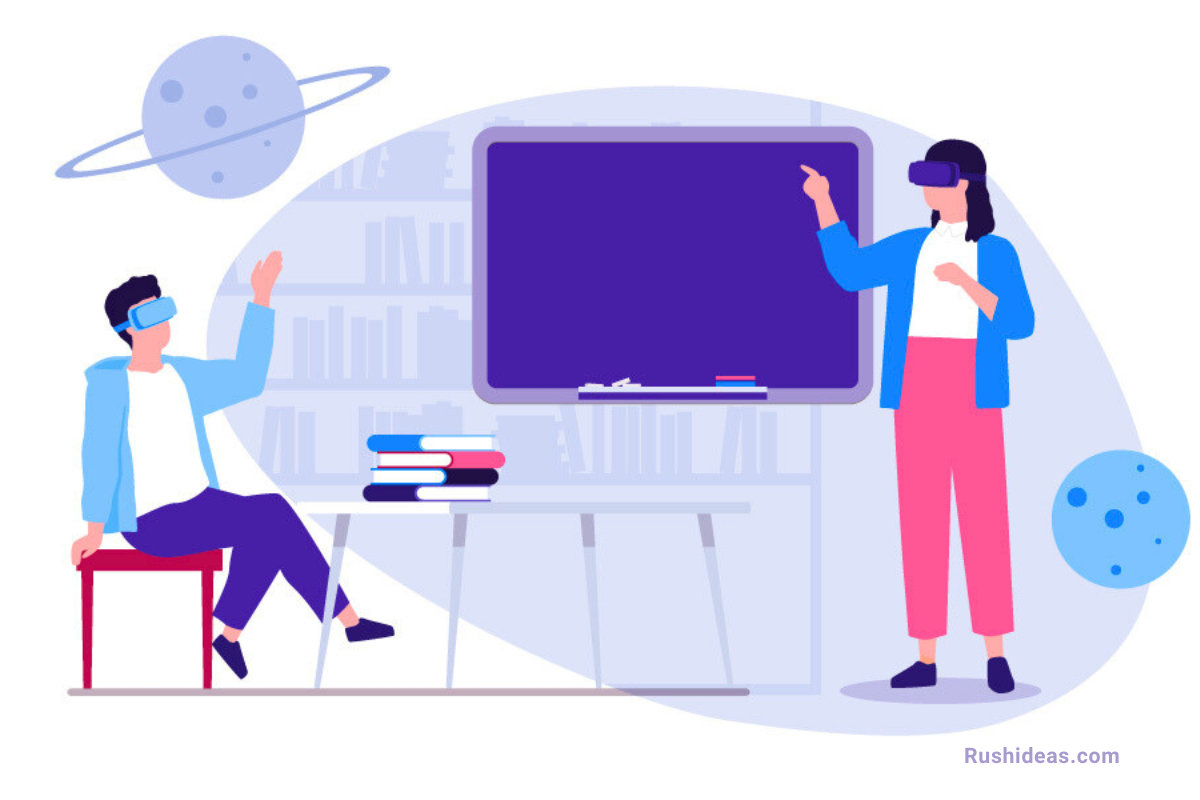The world of education is undergoing a rapid transformation, and at the heart of this evolution lies educational technology (edtech). As we approach 2024, the edtech sector is poised to redefine the way we learn and teach, leveraging cutting-edge technologies to enhance accessibility, engagement, and effectiveness in education. Among these technologies, Augmented Reality (AR) and Virtual Reality (VR) stand out as game-changers. In this comprehensive blog, we’ll explore the transformative potential of AR/VR in education and delve into the trends that will shape the future of learning.
Understanding AR/VR
Augmented Reality (AR): AR overlays digital information onto the real world, enhancing our perception of reality. This technology typically involves the use of smartphones, tablets, or AR glasses to superimpose virtual objects, images, or information onto the user’s view of the physical environment. AR can be experienced through various applications, such as educational apps, gaming, navigation, and marketing campaigns. One of the most well-known examples of AR is Pokémon GO, where virtual creatures appear in the real world through the user’s smartphone camera.
Virtual Reality (VR): VR, on the other hand, immerses users in a completely simulated environment, blocking out the physical world entirely. This is usually achieved through the use of VR headsets or goggles, which provide a 360-degree view of a virtual environment. VR environments can be entirely computer-generated or filmed with specialized cameras to create immersive experiences. VR technology is commonly used for gaming, entertainment, training simulations, virtual tours, and therapeutic purposes. Users can interact with the virtual environment through controllers, hand gestures, or even body movements depending on the level of immersion and interactivity offered by the VR system.
In summary, AR enhances the real world by overlaying digital content onto it, while VR creates a completely artificial environment, immersing users in a virtual world. Both AR and VR have a wide range of applications across various industries, including education, healthcare, entertainment, marketing, and more, offering unique opportunities for immersive experiences and interaction.
Benefits of AR/VR in Education
Augmented Reality (AR) and Virtual Reality (VR have revolutionized education, offering a plethora of benefits for both educators and learners. Let’s explore these advantages:
1. Enhanced Learning Experiences:
- AR and VR create immersive environments, allowing students to explore concepts beyond textbooks.
- Visualizing complex subjects becomes easier. For instance, medical students can virtually dissect organs, and history students can witness historical events.
2. Increased Engagement:
- Interactive 3D models, simulations, and gamified content capture students’ attention.
- Learning becomes enjoyable, leading to better retention and understanding.
3. Personalization:
- AR/VR adapts to individual learning styles. Students progress at their own pace.
- Customized content caters to diverse needs, including those of students with disabilities.
4. Skill Development:
- VR simulations enhance practical skills. Pilots can practice flying, and architects can design virtual buildings.
- Soft skills like communication and teamwork are honed through role-playing scenarios.
5. Global Learning Opportunities:
- Virtual field trips transcend geographical boundaries. Students explore ancient civilizations, ecosystems, and cultural landmarks.
- Collaborative VR spaces connect learners worldwide.
6. Safe and Cost-Effective Labs:
- VR replaces traditional labs, reducing risks associated with experiments.
- Chemistry, physics, and biology labs can be conducted virtually.
7. Future-Ready Skills:
- Exposure to AR/VR prepares students for technology-driven careers.
- Understanding these technologies fosters digital literacy.
8. Teacher Training and Professional Development:
- Educators can practice classroom management, lesson delivery, and student engagement in virtual environments.
- AR/VR workshops enhance teaching skills.
9. Inclusivity:
- AR/VR accommodates diverse learners, ensuring equal access to quality education.
- Text-to-speech features aid students with reading difficulties.
In summary, AR/VR redefines education, making it dynamic, engaging, and accessible. As these technologies evolve, educators must embrace them to create transformative learning experiences.
Trends to Watch in the AR/VR Education
1. Personalized Learning Environments
AR and VR allow educators to create personalized learning environments tailored to individual student needs. Imagine a history lesson where students step into ancient civilizations using VR headsets or an AR app that overlays interactive 3D models on biology textbooks. As these technologies evolve, we’ll see more adaptive content and personalized assessments, ensuring that no student is left behind.
2. Virtual Labs and Simulations
Traditional science labs can be expensive and limited by physical constraints. VR and AR offer a solution by providing virtual labs and simulations. Students can dissect virtual frogs, explore chemical reactions, or even simulate physics experiments—all without the need for physical materials. These immersive experiences enhance understanding and encourage experimentation.
3. Global Collaborations
AR and VR break down geographical barriers. Students from different parts of the world can collaborate on projects, attend virtual conferences, and explore cultural heritage sites together. Imagine a language exchange program where students interact with native speakers through AR avatars or a history class where students virtually visit historical landmarks across continents.
4. Career Readiness and Soft Skills
Beyond subject knowledge, AR and VR help develop essential soft skills. Students can practice public speaking in a virtual auditorium, participate in mock job interviews, or learn teamwork through collaborative VR projects. These experiences prepare students for real-world challenges and foster skills like communication, empathy, and adaptability.
5. Accessibility and Inclusion
AR and VR make education more accessible. Students with disabilities can engage in immersive learning experiences tailored to their needs. For instance, an AR app can provide real-time sign language translation during lectures, and VR simulations can help students with mobility issues explore historical sites virtually. Inclusion becomes a priority as these technologies evolve.
6. Gamification and Engagement
Gamified learning experiences using AR and VR motivate students. Whether it’s solving math puzzles in an AR escape room or exploring historical mysteries in a VR treasure hunt, gamification enhances engagement. Educators will increasingly integrate game elements into curricula to make learning fun and interactive.
7. Teacher Training and Professional Development
AR and VR aren’t just for students—they benefit teachers too. Virtual classrooms allow educators to practice classroom management, experiment with teaching strategies, and receive feedback in a risk-free environment. As teacher training programs adopt these technologies, educators will become proficient in using AR and VR effectively.
8. Ethical Considerations and Digital Citizenship
As AR and VR become integral to education, discussions around ethics, privacy, and responsible use will grow. Educators must teach digital citizenship, emphasizing responsible behavior in virtual spaces. Students need to understand the implications of sharing personal data within immersive environments.
9. Affordability and Accessibility
The cost of AR and VR hardware is gradually decreasing, making it more accessible to schools and colleges. Cloud-based solutions and smartphone-compatible AR apps democratize access. Educators should explore budget-friendly options and consider how to maximize impact within limited resources.
10. Content Creation by Students
AR and VR empower students to become creators. They can design their own virtual worlds, build 3D models, and develop interactive narratives. Encouraging student-led content creation fosters creativity, critical thinking, and digital literacy.
Conclusion
In conclusion, AR/VR technologies have the potential to revolutionize education by providing immersive, personalized, and interactive learning experiences. By embracing these technologies and staying abreast of emerging trends, educators can enhance student engagement, improve learning outcomes, and prepare students for success in an increasingly digital world. As we navigate the ever-changing educational landscape, AR/VR will undoubtedly play a pivotal role in shaping the future of teaching and learning.
















Leave a Reply